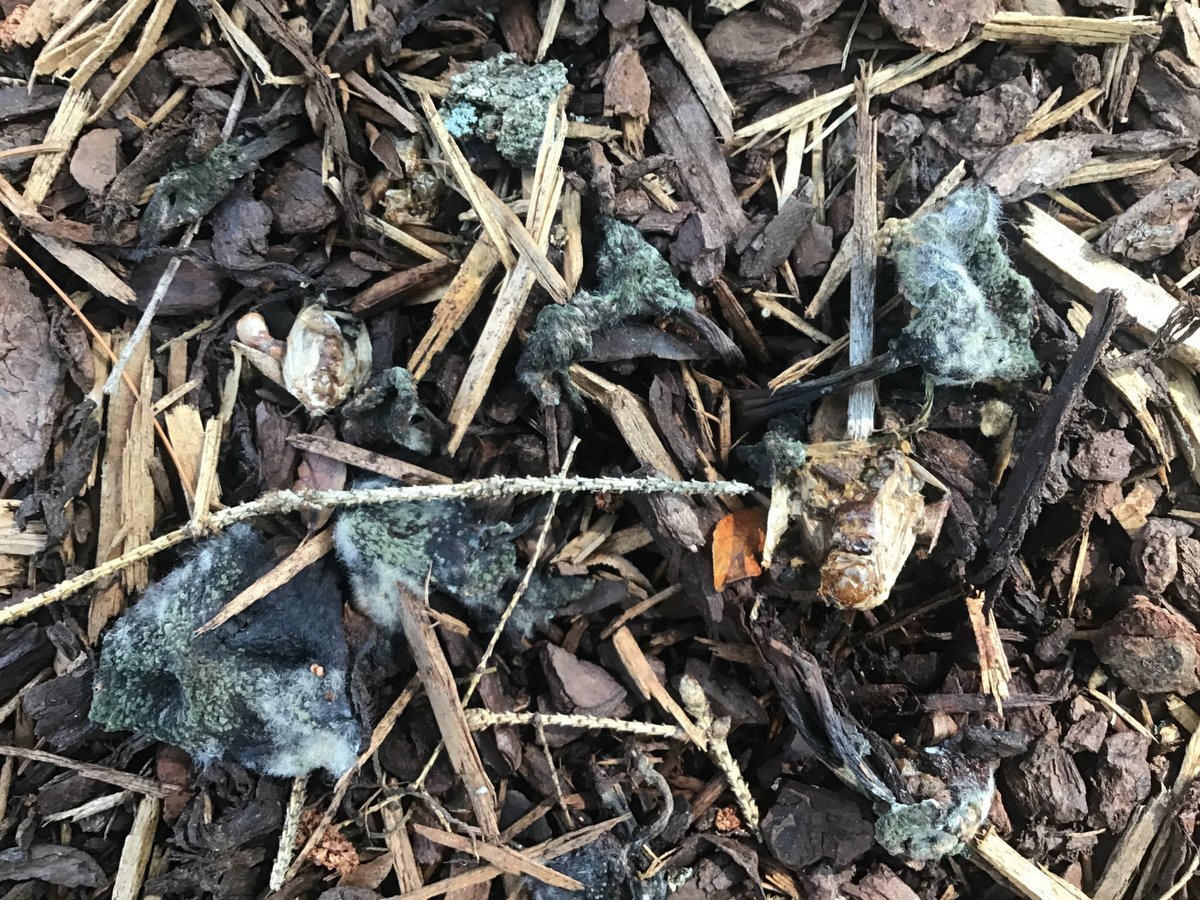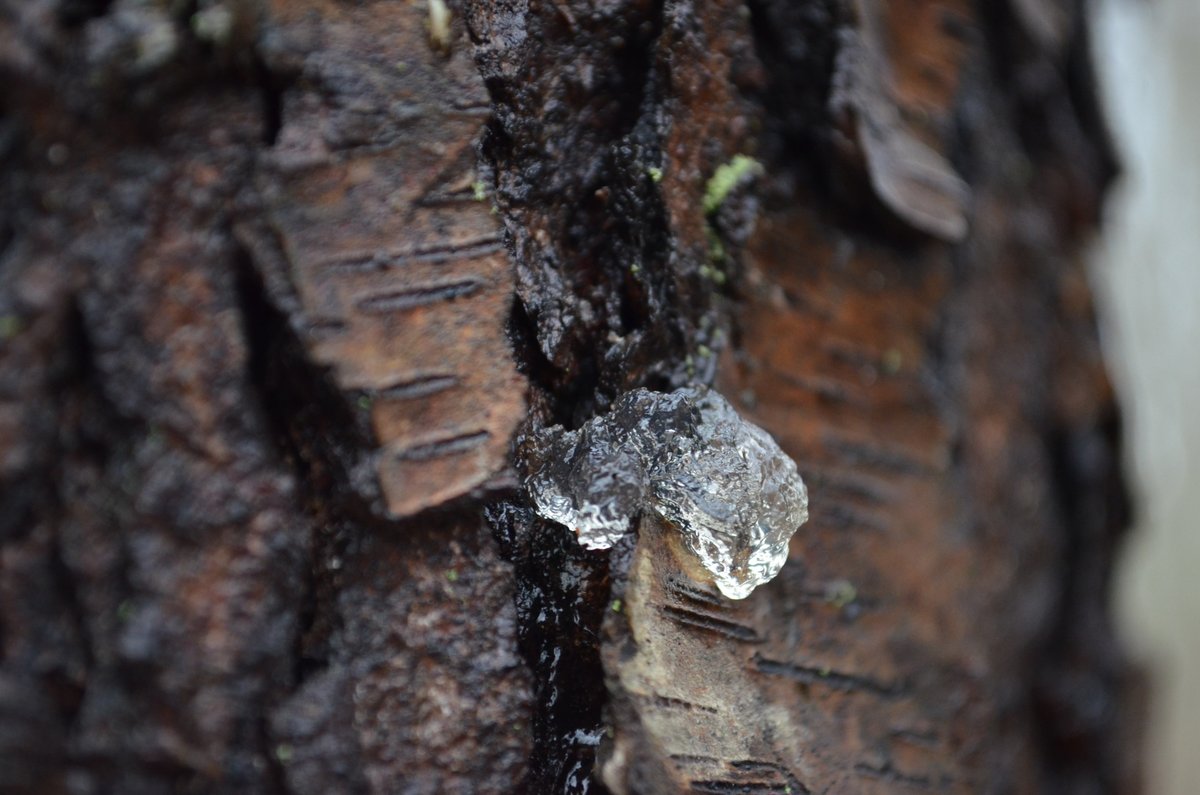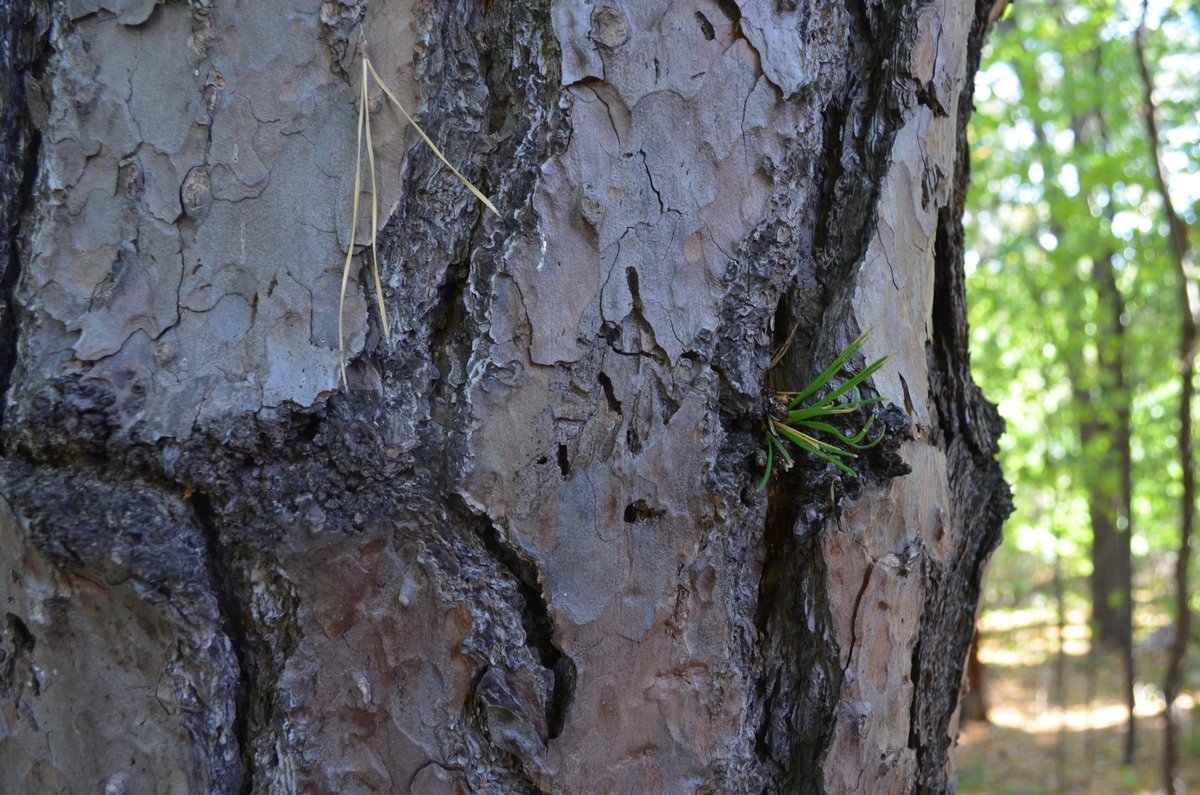I try to keep the newsletter in tune with the changing seasons, but with my focus on Lymantria dispar (now officially silky moths) I felt like I couldn’t quite keep up, like they had come and gone so quickly that by the time I was starting to see their patterns and how they fit into the larger picture, all the doom and gloom of a leafless July canopy already seemed like a distant memory.
To the keen-eyed naturalist, evidence of their early summer binge fest still peppers the land, from clusters of egg masses on the underside of branches to the rotting corpses of mated adults littered at the base of trees (see image below). So how did we get here, from bearing witness to the apocalyptic demise of our oaks to a seeming return to baseline? Read on!

Plastic plants
In the last post, I included two photos, one of the oaks at St Marks Church in Burlington in July and again in August, and the difference is quite dramatic. It almost looks like the dates should be reversed, like the August photos with the full green canopy is the before photo and the photo from June of the barren trees is the after shot. From looking at the archives, there are only ever articles about the immediate visceral reaction to the moths, but never to the subsequent demise of the trees the caterpillars fed on. Because there isn’t one. And that’s largely because trees have mechanisms for dealing with the stresses of a near total loss of the canopy.


Coping with stress
Trees have the most unfortunate habit of being rooted in place. They can’t migrate to avoid the winter, they can’t up and move if their habitat becomes unsuitable, and when confronted with hungry caterpillars, they can’t run and hide. Instead, a tree’s response to a threat happens on a much longer, slower, and nearly incomprehensible timeline. A 200 year old sugar maple slowly prunes lower branches shaded by the canopy over decades. Hemlocks growing in a stand fuse roots over centuries to become an interconnected network that shares nutrients throughout the forest.

So when an insect invades and a rapid response is needed, there are three basic courses of action:
- Prevention: Okay, so not a ex-post response, but every plant has defenses from herbivores, from thorns to toxins. These can make it difficult to ingest (e.g. thorns, gummy sap) or to digest the food (like an oak’s tannins).
- Do nothing: Most parasites have a boom and bust population cycle, so the cheapest action in the short term – do nothing and let your parasite burn itself out – might also be effective in the long run. A tree could cope this year with a boom population and in the next year, when the population crashes, recover from the damage. If this the tree’s strategy, it should have an abundance of sunlight at its disposal to construct a cheap trunk/branches. You find this in the weak wood of primary succession species like quaking aspen, paper birch, and staghorn sumac.

- Respond after the threat: So if a tree decides to do something after it detects it’s under attack, it begins the slow, arduous process of healing itself and preventing further damage
- Seal off access points: Conifers seal up wounds by oozing pitch at damage sections of the trunk, cherries (and other rose family trees) create a jelly-like resin at wound sites to seal off the rest of the tree, beech trees with Beech Bark Disease kill off the infected part of the tree producing circular patches on the trunk.
- Recruit external controls: Cherries, for example, have extrafloral nectaries that secrete sugars that attract ants. The ants in turn protect the plant from potential parasites.
- Have tools to recover: Pitch pines have epicormic growth (new growth that develops from buds hidden under the bark on the trunks of trees); beech send up sucker sprouts after a trunk succumbs to beech bark disease, and oaks have lammas growth.
Don’t know what lammas growth is? Stay tuned!




